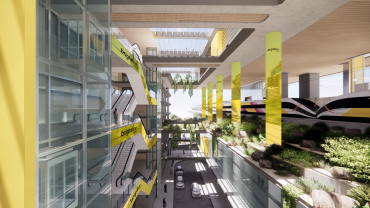NYC Sees Sizable Jump in Construction Starts, Boosted by Far West Side Development
By Terence Cullen February 12, 2016 2:00 pm
reprints
There’s rarely ever been a doubt that New York City reigns supreme over the rest of the country when it comes to volume of real estate deals and the amount of new construction. After all, the Empire State Building and Rockefeller Center were built during the Great Depression, and 1 Bryant Park opened during the recession.
Last year was no different when it came to new construction, as Gotham saw practically $35 billion in new projects break ground, according to a recent report from Dodge Data & Analytics, which ranks cities and metropolitan areas by dollars spent on groundbreakings. Commercial development on the Far West Side and continued residential building boosted that number, which was nearly $30 billion more than the second most active city on the list (the Miami area saw $6.32 billion). But a downturn in the latest cycle could drive these numbers lower in 2016 as land prices spiral down and residential condominiums become abundant.
“[The market is] going to be going down very significantly,” said Robert Knakal, the chairman of New York investment sales at Cushman & Wakefield. “There is a very, very significant air bubble that’s being created in the market that started a few months ago and will create a void in the construction market over the next few years.”
New construction groundbreakings for commercial and multifamily projects jumped 66 percent to $34.87 billion in 2015 from $20.95 billion in 2014, according to the Dodge report. Office development by itself increased 95 percent between 2014 and 2015. The data tracking firm’s economists attributed that to work getting underway for such commercial projects as Related Companies and Oxford Properties Group’s $2.5 billion 30 Hudson Yards and the $840 million 55 Hudson Yards, as well as Brookfield Property Partners’ $1.2 billion 1 Manhattan West, all of which are between Ninth Avenue and the Hudson River.
“In comparison to commercial building, the upward progression by multifamily housing has been steadier, with 2015 marking the sixth straight year of double-digit growth, helped in particular by yet another substantial increase reported for the New York City metropolitan area,” Robert Murray, Dodge’s chief economist, said in a press release. “What stands out about the New York City metropolitan area in 2015 are the strong construction start gains for both commercial building and multifamily housing.”
Dodge notes that 43 multifamily projects that broke ground in New York City last year cost more than $100 million. It singled out among those projects with the highest costs: 1800 Park Avenue between East 124th and East 125th Streets; 400 West 61st Street at the corner of West End Avenue; and 15 Hudson Yards between 10th and 11th Avenues.
Condo development has some experts worried that too much has been built too quickly. Indeed, residential, for-sale development has been constructed at breakneck speed since after the recession and has spilled into Brooklyn and sections of western Queens. At a construction panel hosted by Anchin yesterday, Silverstein Properties Chairman Larry Silverstein said after wild building in the past few years the luxury condo market has likely topped out. He pointed to condo sales at his company’s Four Seasons hotel at 30 Park Place in the Financial District, which he said have been strong but slow in the last year.
“We were selling apartments very well, very swiftly at the Four Seasons hotel,” said Mr. Silverstein, who gave the forum’s afternoon keynote address. “But suddenly you can see activity fell off the cliff. It stopped. It went quiet. And not just with us, but all over the city of New York. It’s really quiet.”
The price of land has become and will continue to become a problem for getting new construction off the ground, Mr. Knakal said. Sellers are likely to hold on to development sites because land values are dropping, which is going to slow down new construction in the years to come. Rising construction costs, the price of materials and the lag time to getting those supplies delivered have also contributed to the nail-biting over the market, Mr. Knakal added.
“Land values have exceeded how fundamentals have performed for a long period of time,” he said. “Construction costs are up very significantly and that’s both for union and nonunion work. A combination of these factors has developers concerned about where the market is heading.”


